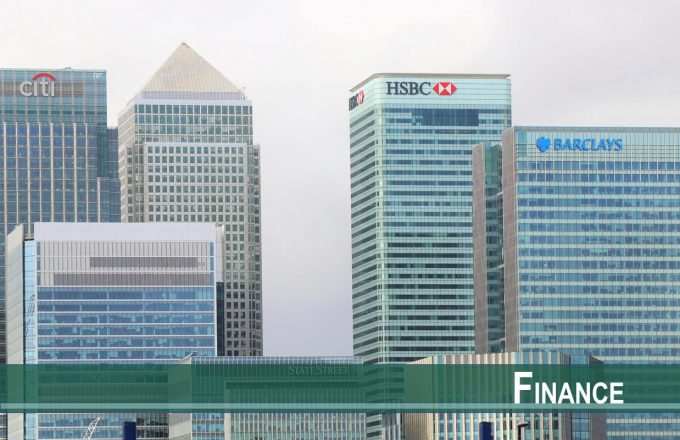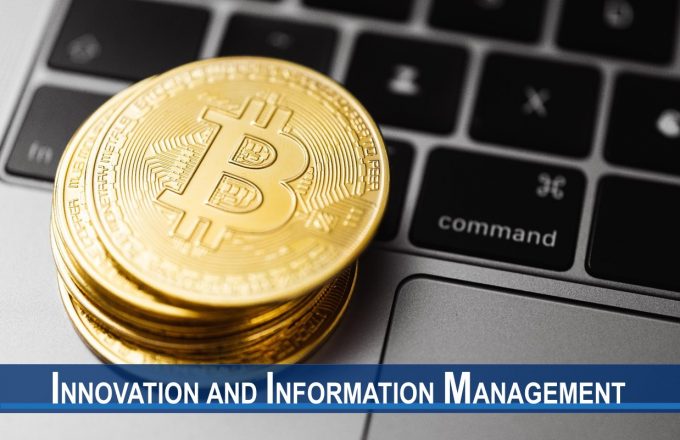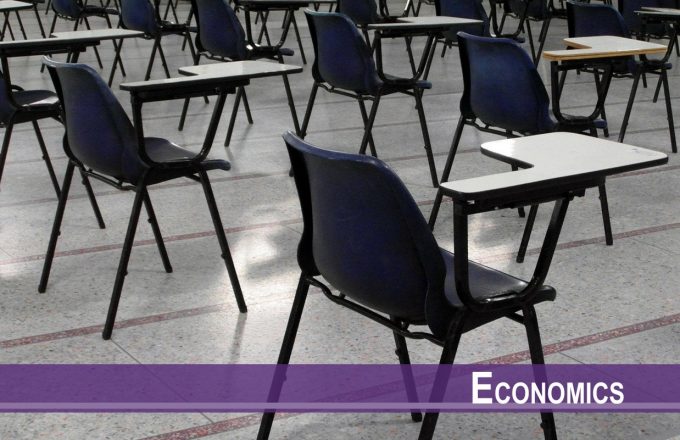We identify an important channel, acquisitions of public targets, via which the governance through trading (GTT) improves firm values. The disciplinary effect of GTT is more pronounced for firms with higher managerial wealth-performance sensitivity and moderate institutional ownership concentration. Firms with higher GTT also have higher subsequent ROA, ROE, Tobin's Q, analysts forecasted EPS growth rate, and lower expected default risk. The effect is stronger after Decimalization and robust to using two instrumental variables. We conduct several exercises to rule out alternative explanations, such as institutional superior information, investor activism, and momentum. Additional tests show that the disciplinary effect of GTT only exists for less financially-constrained firms and non-all-cash M&As where the agency problem is more likely to be prevalent.
December 2020
Journal of Corporate Finance
We investigate how communication within banks affects small business lending. Using travel times between a bank’s headquarters and its branches to proxy for the costs of communicating soft information, we exploit shocks to these travel times—the introduction of new airline routes—to evaluate the impact of within-bank communication costs on small business loans. We find that reducing headquarters-branch travel time boosts small business lending in the branch’s county. Several extensions suggest that new airline routes facilitate in-person communications that boost small-firm lending.
December 2020
The Review of Financial Studies
Does the predeal geographic overlap of the branches of two banks affect the probability that they merge, postannouncement stock returns, and postmerger performance? We compile information on U.S. bank acquisitions from 1984 through 2016, construct several measures of network overlap, and design and implement a new identification strategy. We find that greater predeal network overlap (1) increases the likelihood that two banks merge; (2) boosts the cumulative abnormal returns of the acquirer, target, and combined banks; and (3) reduces employment, boosts revenues, reduces the number of branches, improves loan quality, and expedites executive turnover.
November 2020
Management Science
Macroeconomists failed to predict the Great Recession, suggesting that the existing macroeconomic models may have been misspecified. Bearing in mind this potential misspecification or “model uncertainty,” how do agents’ optimal decisions change? Furthermore, how large are the welfare costs of model misspecification? To shed light on these questions, we develop a tractable continuous-time general equilibrium model to show that a fear of model misspecification reduces both the equilibrium interest rate and the relative inequality of consumption to income, making the model’s predictions closer to the data. Our quantitative analysis shows that the welfare costs of model uncertainty are sizable.
November 2020
The Economic Journal
Prior studies have shown that social media discussions can be helpful in predicting price movements in financial markets. With the increasingly large amount of social media data, how to effectively distinguish value-relevant information from noise remains an important question. We study this question by investigating the role of network cohesion in the relationship between social media sentiment and price changes in the Bitcoin market. As network cohesion is associated with information correlation within the discussion network, we hypothesize that less cohesive social media discussion networks are better at predicting the next-day returns than more cohesive networks. Both regression analyses and trading simulations based on data collected from Bitcointalk.org confirm our hypothesis. Our findings enrich the literature on the role of social media in financial markets and provide actionable insights for investors to trade based on social media signals.
October 2020
Journal of Management Information Systems
China's civil examination system (keju), an incredibly long-lived institution, has a persistent impact on human capital outcomes today. Using the variation in the density of jinshi—the highest qualification—across 278 Chinese prefectures in the Ming-Qing period (c. 1368–1905) to proxy for this effect, we find that a doubling of jinshi per 10,000 population leads to an 8.5% increase in years of schooling in 2010. The persistent effect of keju can be attributed to a multitude of channels including cultural transmission, educational infrastructure, social capital, and to a lesser extent political elites.
October 2020
The Economic Journal
Digital ads often display video content in which immobile products are presented as if they are moving spontaneously. Six studies demonstrate a speed-based scaling effect, such that consumers estimate the size of an immobile product to be smaller when it is animated to move faster in videos, due to the inverse size–speed association they have learned from the domain of animate agents (e.g., animals, humans). Supporting a cross-domain knowledge transfer model of learned size–speed association, this speed-based scaling effect is (1) reduced when consumers perceive a product’s movement pattern as less similar to animate agents’ movement patterns, (2) reversed when a positive size–speed association in the base domain of animate agents is made accessible, (3) attenuated for consumers who have more knowledge about the target product domain, and (4) mitigated when explicit product size information is highlighted. Furthermore, by decreasing assessed product size, fast animated movement speed can either positively or negatively influence willingness to pay, depending on consumers’ size preferences.
September 2020
Journal of Marketing
This paper examines the effect of CEOs’ outside opportunities on the use of relative performance evaluation (RPE) in CEO compensation. My tests exploit the staggered rejection of the Inevitable Disclosure Doctrine (IDD) by US state courts as an exogenous increase in CEOs’ outside opportunities. I find that the rejection of the IDD leads to a significant increase in the sensitivity of CEO pay to systematic performance (less RPE). This increase is more pronounced for CEOs with greater labor market mobility and industries where proprietary information is more important and not related to measures of governance quality. These results suggest that firms link CEO pay to systematic performance to retain talent and ensure participation.
September 2020
Journal of Financial Economics
We study the value of commitment in a business environment that is both competitive and uncertain, in which two firms face stochastic demands and compete in positioning and repositioning. If the future demand tends to disperse or the demand uncertainty is sufficiently large, one firm chooses rigidity (i.e., commits not to change its positions), and the other chooses flexibility (i.e., to reposition freely). We find that a firm’s rigidity can benefit not only itself, but also its flexible rival. When uncertainty is larger, rigidity becomes more valuable relative to flexibility. These results arise because the asymmetric equilibrium generates two collective gains in addition to the usual individual gain (in terms of competitive advantages) accrued to the committing firm. A firm’s rigid repositioning can soften competition and generate a commitment value, and the other firm’s flexible repositioning generates an option value. Both values then spill over to competitors within the ecosystem. These results suggest that, when firms compete under uncertainty, commitment and options are valuable not only for the party that is making the choice, but also for all competing parties collectively. Commitment value and option value do not have to be mutually exclusive; they can coexist and even strengthen each other through unilateral commitment, which achieves the best of both strategies.
September 2020
Management Science
Our Authors

Prof. Shiyang HUANG

Prof. Jinzhao DU

Prof. Pingyang GAO

Prof. Naijia GUO

Prof. Chu (Ivy) DANG

Prof. Fangzhou LU

Prof. Jeffrey NG

Prof. Dragon Yongjun TANG

Prof. Yanbo WANG

Prof. Jiaheng YU

Prof. Jian ZHANG
Prof. Shiyang HUANG
Deputy Area Head of Finance
Professor
Latest Research Publications
August 2024
February 2024
Prof. Jinzhao DU
BBA Deputy Programme Director and Admissions Tutor
Assistant Professor
Latest Research Publications
May-June 2024
Prof. Pingyang GAO
Associate Dean (Taught Postgraduate)
Zhang Yonghong Professor in Accounting
Professor
Latest Research Publications
Prof. Naijia GUO
Assistant Professor
Latest Research Publications
Prof. Chu (Ivy) DANG
Assistant Professor
Latest Research Publications
Prof. Fangzhou LU
Assistant Professor
Latest Research Publications
March 2021
Prof. Jeffrey NG
Professor
Associate Director, HKU Jockey Club Enterprise Sustainability Global Research Institute
Latest Research Publications
Prof. Dragon Yongjun TANG
Associate Director, Centre for Financial Innovation and Development
Professor
Latest Research Publications
Prof. Yanbo WANG
Associate Director, Centre for Innovation and Entrepreneurship
Associate Professor
Latest Research Publications
June 2021
Prof. Jiaheng YU
Assistant Professor
Latest Research Publications
Prof. Jian ZHANG
Assistant Professor
Latest Research Publications
December 2024














